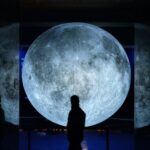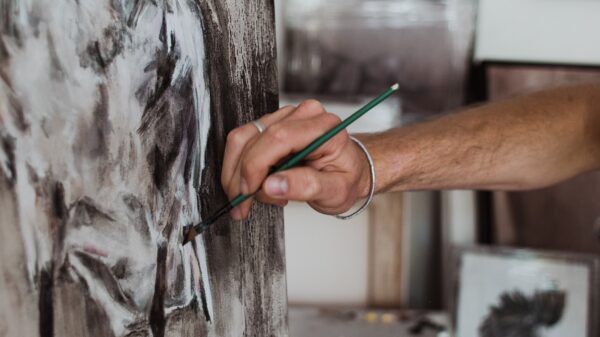From the majestic mountains to the tranquil beaches, nature has always been a source of inspiration for artists. The beauty and diversity of our natural world have captivated painters throughout history, inspiring them to create some of the most breathtaking masterpieces in art. In this blog post, we delve into one of the most popular genres that celebrate nature – landscape painting. We explore how different artists have interpreted landscapes over time and discover why it remains such an influential genre even today. So grab your canvas and brushes as we embark on a journey through some awe-inspiring depictions of nature!
Introduction to Landscape Painting
Landscape painting is a genre of art that depicts natural scenery such as mountains, forests, rivers, and fields. It can be done in a variety of media, including oil paint, watercolor, and gouache. Landscape paintings often depict a specific location or particular type of landscape, such as seascapes, cityscapes, or pastoral scenes.
Some of the earliest known examples of landscape painting are found in the Grotte Chauvet in France, which contains cave paintings dating back to 32,000 BC. These paintings depict animals and hunting scenes and provide insight into the way our ancestors saw the world around them.
Throughout history, artists have been inspired by nature to create beautiful landscapes on canvas. In the 13th century, Giotto di Bondone was one of the first artists to begin using perspective in his paintings, which helped give his work a more realistic feel. The Renaissance period saw a renewed interest in classical culture and art, which led to increased attention being paid to detail and realism in landscape paintings.
During the 17th century, Dutch artist Jan van der Heyden
Understanding the Influence of Nature in Art
In art, the word “nature” can refer to the physical world, including plants, animals, and other features of the Earth. It can also refer to the forces that shape and affect the physical world, such as weather and climate.
When we talk about nature in art, we are usually talking about landscape paintings. Landscape paintings are a type of art that depict scenes from nature, including mountains, forests, rivers, and fields. They often include elements of both realism and abstraction, and they can be representational or non-representational.
Landscape paintings have been created for centuries, and their popularity has waxed and waned over time. In recent years, there has been a renewed interest in landscape painting, due in part to the increasing popularity of outdoor activities like hiking and camping.
There are many different reasons why people enjoy looking at landscape paintings. For some people, these paintings offer a way to escape from the hustle and bustle of everyday life. They provide a chance to appreciate the beauty of nature without having to leave home. For others, landscape paintings offer an opportunity to reflect on their own personal relationships with nature.
Whether you are looking for a way to escape the stresses of daily life or you are seeking a deeper understanding of your connection to the natural world, spending some time exploring landscape paintings is sure to be beneficial.
History of Landscape Painting
Landscape painting is a type of painting that depicts natural scenery, such as mountains, forests, rivers, and so on. It has been around since prehistoric times, when early humans first started to paint on cave walls.
Throughout history, landscape painting has been used as a way to communicate different ideas and feelings about the natural world. For example, in ancient China, landscape paintings were often used to convey political messages. In the West during the Renaissance period, artists began to use perspective and other techniques to create more realistic depictions of landscapes.
During the Romantic era in the late 18th and early 19th centuries, artists began to see nature as something that could inspire emotions and creativity. They often painted wild and untamed landscapes as a way to express their feelings about the natural world.
Today, landscape painting is still popular among artists who want to capture the beauty and mystery of nature.
Different Styles and Approaches to Landscape Painting
One of the earliest examples is the Chinese ink painting tradition of shan shui, or “mountain-water” painting, which dates back to the 6th century. Shan shui paintings typically depict scenes of mountains, rivers, and other natural elements in a simple yet evocative way.
In the West, landscape painting emerged as its own distinct genre in the 17th century. In the 19th century, artists such as J.M.W. Turner and John Constable sought to capture the more immediate experience of nature, with an emphasis on light and atmosphere. The 20th century saw further experimentation with landscapes, as artists began to explore abstraction and new ways of representing the natural world.
Examples of Famous Landscape Paintings
There are countless examples of famous landscape paintings that have been created throughout history. Some of the most renowned artists in the world have captured the beauty and grandeur of nature in their work.
The Hay Wagon by American painter Andrew Wyeth is a classic example of a landscape painting that captures the simplicity and beauty of the natural world. The painting features a wagon filled with hay, with the surrounding countryside visible in the background. Wyeth’s use of light and shadow creates a sense of depth and dimension in the scene, making it appear almost three-dimensional.
Another famous American painter, Georgia O’Keeffe, was also inspired by nature in her landscapes. O’Keeffe’s paintings often featured close-up views of flowers or other plants, highlighting their intricate details. Her use of color was also very important in her work, as she often used bold hues to create a sense of vibrancy in her landscapes.
French artist Claude Monet is one of the most well-known painters associated with the Impressionist movement. Monet’s landscapes were often concerned with capturing the effects of light on different surfaces. He would often paint outdoors, using natural light to illuminate his subjects. In his iconic painting “Impression, Sunrise,” Monet capture
Benefits of Landscape Painting
There are many benefits to landscape painting, including the ability to connect with nature, relax and de-stress, and boost your mood and creativity.
Painting landscapes can help you feel more connected to nature, as you focus on the beauty of your surroundings. The act of painting can also be relaxing and therapeutic, helping to reduce stress and tension. Additionally, the creative process can be beneficial for your mental health, helping to boost your mood and increase your sense of well-being.
Tips for Beginner Artists
There are countless ways to approach landscape painting, but for beginners, there are a few key things to keep in mind. First, pay attention to the light. The way the light hits the scene before you will have a big impact on the final painting. Second, think about the colors you see. Not all landscapes are green and brown – look for interesting color combinations that will make your painting stand out. Don’t be afraid to experiment. There are no rules when it comes to art, so go ahead and try something new.
Conclusion
Landscape painting is a powerful way to explore the influence of nature in art. Whether you are looking for an escape from reality or simply searching for inspiration, landscape artwork can provide a connection to nature and its beauty. It allows us to reflect on our relationship with the environment and contemplate how we interact with it. Artists have used this form of expression since ancient times, as evidenced by the works that remain today. Nature in art continues to be a source of both inspiration and comfort in our lives, making landscape paintings timeless pieces of beauty that will always endure.










